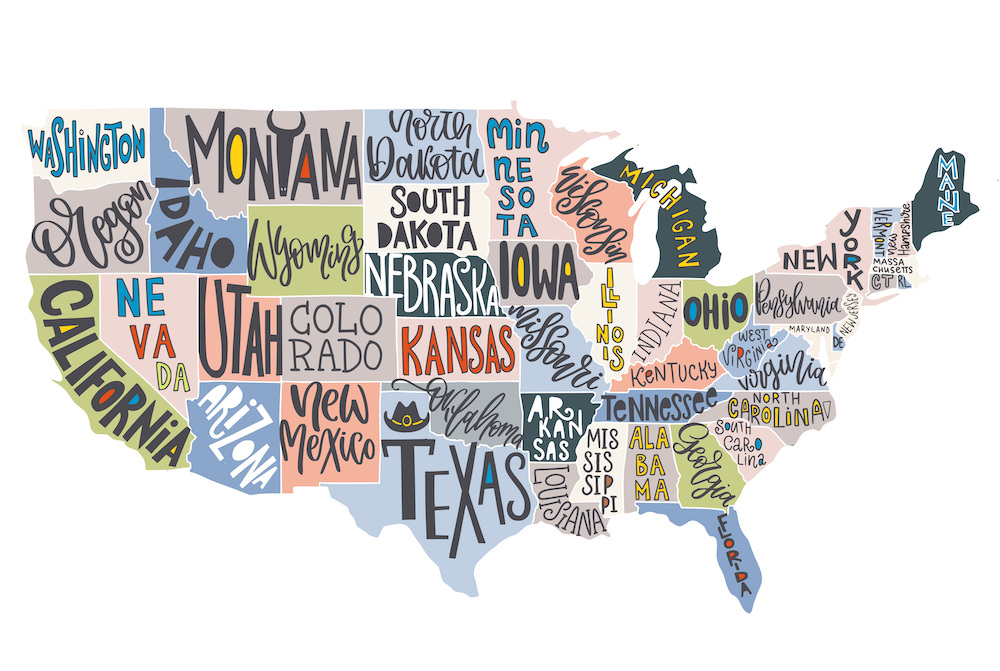2022 Average Cost of Homeowners Insurance by State

When Forbes looked at the numbers, they found that Hawaii was the cheapest state for homeowners insurance where the average premium came in at a very affordable $558. Oklahoma grabbed the dubious title of being the most expensive state in the country for homeowners insurance with an average premium that hit $4,122, which is a shocking $3,564 difference.
Here are the top five cheapest states for homeowners insurance:
- Hawaii: $558
- Utah: $817
- Oregon: $834
- Vermont: $944
- New Hampshire: $961
The top five most expensive states were the following, most of which experience severe weather on a regular basis or are located in Tornado Alley:
- Oklahoma: $4,122
- Nebraska: $3,309
- Kansas: $3,035
- Texas: $3,013
- Louisiana: $2,988
Here is the full listing of states average homeowners insurance costs:
| State | 2022 Average Premium | State | 2022 Average Premium | |
| Alabama | $2,236 | Montana | $1,990 | |
| Alaska | $1,247 | Nebraska | $3,309 | |
| Arizona | $1,495 | Nevada | $1,083 | |
| Arkansas | $2,595 | New Hampshire | $961 | |
| California | $1,171 | New Jersey | $978 | |
| Colorado | $2,761 | New Mexico | $1,724 | |
| Connecticut | $1,614 | New York | $1,226 | |
| Delaware | $1,026 | North Carolina | $2,452 | |
| DC | $1,118 | North Dakota | $2,086 | |
| Florida | $2,173 | Ohio | $1,177 | |
| Georgia | $1,632 | Oklahoma | $4,122 | |
| Hawaii | $558 | Oregon | $834 | |
| Idaho | $1,073 | Pennsylvania | $1,079 | |
| Illinois | $1,812 | Rhode Island | $1,326 | |
| Indiana | $1,517 | South Carolina | $1,599 | |
| Iowa | $1,729 | South Dakota | $2,571 | |
| Kansas | $3,035 | Tennessee | $1,747 | |
| Kentucky | $2,376 | Texas | $3,013 | |
| Louisiana | $2,988 | Utah | $817 | |
| Maine | $1,035 | Vermont | $944 | |
| Maryland | $1,241 | Virginia | $1,292 | |
| Massachusetts | $1,474 | Washington | $1,221 | |
| Michigan | $1,602 | West Virginia | $1,426 | |
| Minnesota | $2,000 | Wisconsin | $1,078 | |
| Mississippi | $2,899 | Wyoming | $1,423 | |
| Missouri | $2,504 |
Based on the averages above, the new 2022 home insurance premium average for the United States is $1,733. Obviously, some states are more expensive than others, plus when you factor high risk states or homes in a coastal market, the price of home insurance increases due to the exposure to hurricanes, wind and hail. Although your basic homeowners insurance can be reasonably cheap, you may be paying extra for the wind and hail insurance coverage because you live near the coast.
Factors insurers use to calculate your premium
Insurance companies look at a variety of different risk factors when setting a premium. These include factors related to your home as well as your personal information. Here are a few items that insurers will look at:
- Your home’s location: If you live in an oceanfront home, in a forest or in an area that sees severe weather on a regular basis, you will pay more for coverage.
- Rebuilding cost: The cost to rebuild your home can push your premium up or down.
- Building materials: Insurers consider the materials used to build your home.
- Age: Older homes are often more expensive to insure than newer ones.
- Personal claims history: If you have made numerous claims on your homeowner policy in the past you will pay more for coverage.
- Coverage and policy limits: Higher coverage levels will obviously push your premium higher.
- Deductible: The higher your deductible, the lower your premium will be.
- Credit score: Your credit score impacts your insurance premium with low scores leading to a higher premium. Some states don’t allow your credit score to be considered.
How to save money on your homeowners insurance
Here are a few tips to help save money on your homeowners coverage:
- Raise your deductible: Raising your deductible will always lower your premium. If you can afford to double your deductible your premium should drop a fair amount. Always choose a deductible you can easily afford in the even you have to make a claim on the policy.
- Shop around: Shopping your coverage is one of the easiest ways to lower your premium. Insurance companies rate risk differently which can result in dramatic differences in premium quotes. Shop at least five different insurance companies and make sure you are comparing apples to apples when it comes to coverage levels and deductibles.
- Discounts: Insurance companies offer a wide range of discounts which can lower your premium. Ask your agent to do a discount review and make sure all available discounts are being applied to your policy.
